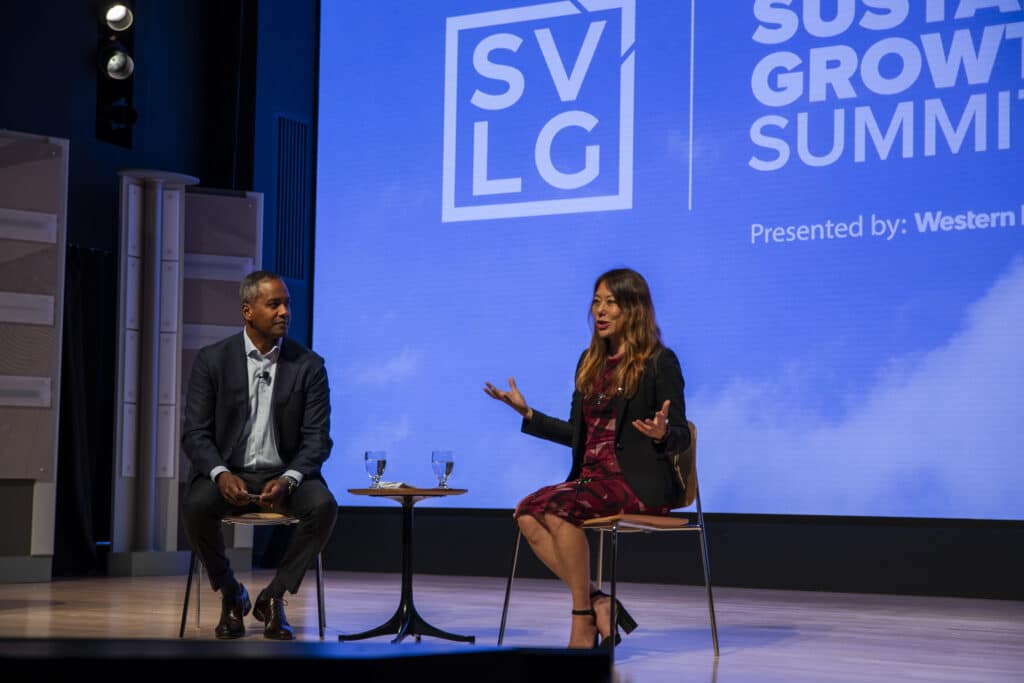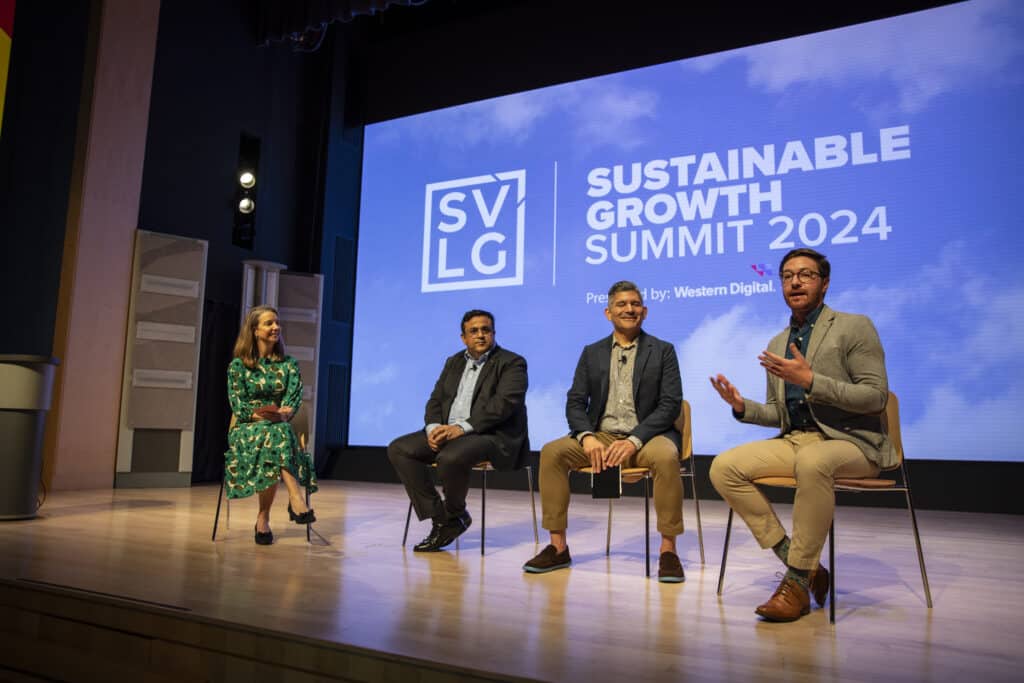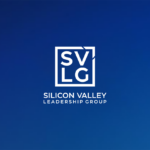On June 21, the Silicon Valley Leadership Group held its first annual Sustainable Growth Summit bringing together industry leaders, policymakers, and sustainability experts to discuss critical climate change, innovation, and environmental stewardship issues.
As Silicon Valley continues to lead the development of breakthrough technologies that shape our world, convenings like this will play a crucial role in aligning economic innovation with broader statewide sustainability goals.
With insights from standout speakers – including California State Treasurer Fiona Ma, U.S. Department of Energy Principal Deputy Assistant Secretary Jeff Marootian, and U.S. Treasury Climate Hub Lead Ethan Zindler — the conversations during this year’s summit will help shape a more resilient future for the Golden State and beyond. Before we dive in, a special thank you to our member company Oracle for hosting this year’s summit and to Western Digital for being the lead sponsor.

SVLG’s CEO Ahmad Thomas and California State Treasurer Fiona Ma.
Here are three key takeaways:
1. California remains a national leader in sustainability and climate protection.
Throughout the Summit, speakers emphasized the leading role of the Golden State in advancing next-generation climate solutions that improve community well-being and drive economic innovation forward. California has adopted comprehensive strategies to address climate challenges by integrating smart growth, housing, and transportation issues with traditional focus areas like decarbonization, energy efficiency, resiliency, and environmental justice – all vital to the future of Silicon Valley and the Bay Area.
At the Summit, leaders from Washington D.C. and Sacramento spotlighted California’s transformational investments and policy approaches to address climate change. SVLG CEO Ahmad Thomas’s conversation with California State Treasurer Fiona Ma showcased the state’s leadership in sustainable investment, highlighting the fact that California has met its ambitious AB 32 goals and maintains strong commitments to Environmental, Social, and Governance (ESG) principles. Additionally, Treasurer Ma emphasized the importance of long-term investment perspectives in climate initiatives and discussed the state’s use of green finance tools to support companies focused on climate and sustainability, including green bonds – which California has been issuing since 2014. Lastly, the Treasurer also addressed the critical role of the talent pool in keeping businesses in California and the state’s pride in its ESG and Diversity, Equity, and Inclusion (DEI) efforts.

Maria Forney from Oracle, Mukul Girotra from Ecolab, Rudy Reyes from Verizon, and Michael Rohwer of Western Digital.
2. Data centers are a key example of the intersection between Silicon Valley’s sustainability efforts and technological innovation.
A significant focus of the Summit was the role of data centers in driving California’s innovation economy. Mukul Girotra from Ecolab, Michael Rohwer of Western Digital, and Rudy Reyes from Verizon shared strategies to reduce energy consumption and enhance environmental sustainability within data center operations.
Technology companies are taking a leading role in adopting sustainable principles to power the digital economy: Western Digital has set a target for net zero emissions by 2030 with a clear line of sight by 2027. Similarly, Verizon outlined its commitment to achieving net zero emissions by 2035, with a 40% reduction in scope 3 emissions. These holistic approaches benefit key stakeholders while providing services essential to the innovation economy for cloud computing, data analytics, AI tools, and more.
However, key challenges going forward will focus on how leading companies can balance reliability and sustainability in data center operations. This includes building redundancies, ensuring uninterruptible power sources, and implementing efficient cooling systems. As Bay Area companies continue to grow, the demand for data center expansion will increase as well. Therefore, the goal of minimizing environmental impact and maintaining community well-being should remain at the forefront of our region’s innovation ecosystem.

Tim McRae, SVLG’s SVP of Sustainable Growth, Ethan Zindler, the Treasury Department’s climate counselor, and Department of Energy PDAS Jeff Marootian.
3. Policymakers should leverage federal and state investments to drive climate solutions forward.
As federal investment in climate solutions grows, ensuring states and localities have the tools to take advantage of historic funding opportunities will be crucial in developing the green technology sector. Ethan Zindler, the Treasury Department’s climate counselor, and Department of Energy PDAS Jeff Marootian discussed the long-term implementation of the Inflation Reduction Act (IRA), its impact on driving the clean energy revolution, and what the future of federal climate action will look like at the state and local levels.
Marootian highlighted the Department of Energy’s focus on early-stage technology support for sustainable solutions and the upwards of $400 billion making next-generation climate innovation possible. Additionally, the DOE has invested in the creation of technical assistance programs for historically disadvantaged groups to help navigate federal funding opportunities. The economic impact of these programs is promising, with an estimated quarter-trillion dollars invested primarily flowing to underserved communities.
To learn more about SVLG’s sustainability work and future events, visit svlg.org/sustainable-growth/.



